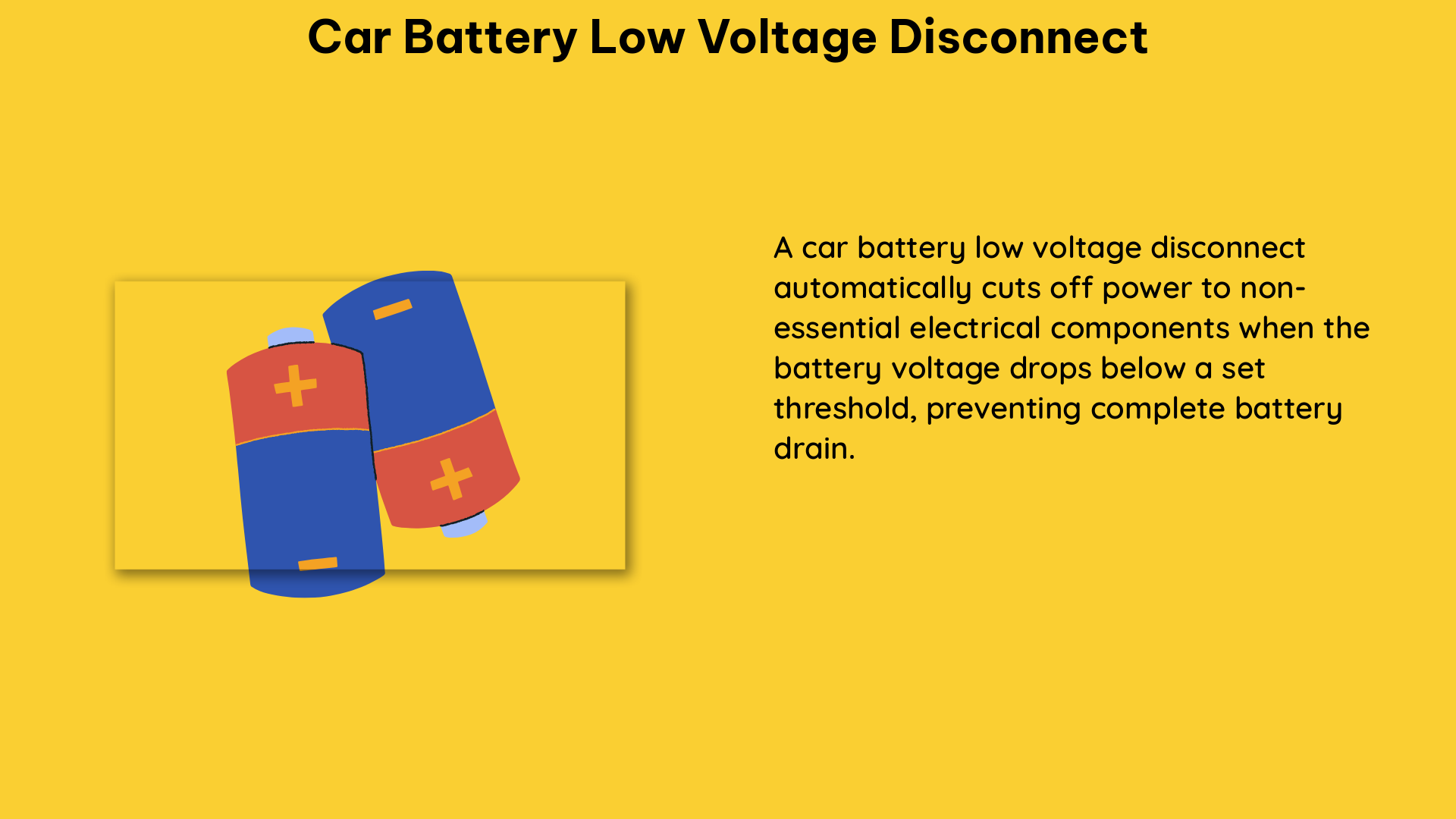The car battery low voltage disconnect (LVD) is a critical protection feature for batteries, particularly lithium batteries, to prevent damage from over-discharging. The LVD is typically set to disconnect the battery when the voltage drops below a certain threshold, usually around 10V for a 12V battery. Once the battery enters LVD, it will not discharge further and will need to be “woken up” with a 12V source to restore its functionality.
Determining the Voltage Threshold for LVD
To determine the specific voltage threshold for a particular battery, it is recommended to use the battery until it reaches one bar and then measure the voltage. This voltage should be used as the cutoff point for the LVD. For example, if a battery reaches one bar at 11.5V, the LVD should be set to disconnect at 11.5V. It is important to note that the voltage threshold may vary depending on the battery type and brand.
Battery Type and Voltage Threshold
- Lead-Acid Batteries: The typical voltage threshold for lead-acid batteries is around 10.5V to 11.5V, depending on the battery’s state of charge and the specific manufacturer’s recommendations.
- Lithium-Ion Batteries: The voltage threshold for lithium-ion batteries is typically around 10V to 11V, as they are more sensitive to over-discharge and can be permanently damaged if the voltage drops too low.
- Lithium-Iron Phosphate (LiFePO4) Batteries: The voltage threshold for LiFePO4 batteries is usually around 11V to 12V, as they are more robust and can withstand deeper discharges without significant degradation.
It is important to note that the voltage threshold may also vary depending on the battery’s age, temperature, and usage patterns. Regular monitoring and adjustments to the LVD settings may be necessary to ensure optimal battery performance and longevity.
Importance of LVD for Battery Protection

The LVD is an essential feature to protect the battery and ensure its longevity. If a battery frequently enters LVD, it may be a sign that the battery system needs to be expanded or that the load on the battery is too high.
Consequences of Over-Discharging Batteries
- Reduced Battery Capacity: Repeatedly discharging a battery below the recommended voltage threshold can lead to a permanent reduction in its overall capacity, shortening the battery’s lifespan.
- Irreversible Damage: In extreme cases, over-discharging a battery can cause irreversible damage to the internal components, rendering the battery unusable and potentially hazardous.
- Voided Warranty: Many battery manufacturers include provisions in their warranties that void the coverage if the battery is left in a deeply discharged state for an extended period.
Maintaining Battery Health with LVD
Regular maintenance and monitoring of the battery voltage can help ensure the battery’s longevity and prevent damage. It is also important to note that leaving a battery at a 0% charge for an extended period can damage the battery and void the warranty.
Recommended Practices for Battery Maintenance
- Check Battery Voltage Regularly: Regularly check the battery voltage, especially before and after extended periods of use, to ensure it is within the recommended range.
- Adjust LVD Threshold as Needed: If the battery’s voltage threshold changes over time, adjust the LVD settings accordingly to maintain optimal protection.
- Avoid Prolonged Deep Discharges: Try to avoid leaving the battery in a deeply discharged state (below 20% state of charge) for more than a few days, as this can lead to permanent damage.
- Recharge Promptly After LVD Activation: If the battery enters LVD, recharge it as soon as possible, ideally within 5 days, to prevent further degradation.
- Consider Battery Replacement: If a battery frequently enters LVD or exhibits other signs of deterioration, it may be time to replace the battery to ensure reliable and safe operation.
By following these best practices and understanding the importance of the car battery low voltage disconnect, you can help ensure the longevity and performance of your vehicle’s battery system.
References:
– Battle Born Batteries – Low Voltage Disconnect
– Reddit – Low Voltage Cutoff Calculation
– Sprinter-Source Forums

The lambdageeks.com Core SME Team is a group of experienced subject matter experts from diverse scientific and technical fields including Physics, Chemistry, Technology,Electronics & Electrical Engineering, Automotive, Mechanical Engineering. Our team collaborates to create high-quality, well-researched articles on a wide range of science and technology topics for the lambdageeks.com website.
All Our Senior SME are having more than 7 Years of experience in the respective fields . They are either Working Industry Professionals or assocaited With different Universities. Refer Our Authors Page to get to know About our Core SMEs.